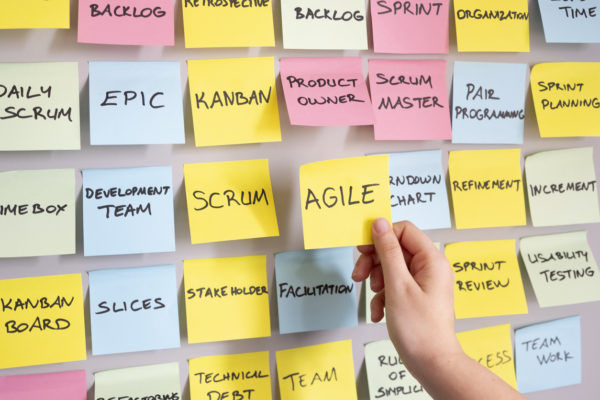Digital technology has forever changed our business and economic landscape. Adopting cloud technology, SaaS and advanced analytics is no longer an option for businesses – most are well on their way. And as more companies become digital, and technology advances, the pace of change and innovation required to stay competitive continues to increase.
The need for speed and innovation has also accelerated the adoption of Agile software development to build new digital systems. Agile development is critical for addressing changing requirements and continuous improvement based on immediate market and user feedback.
What has lagged, however, is how outsourcing providers deliver the necessary services to build, deploy, and support today’s new digital systems. Old delivery models are based on cost containment, SLA compliance, and monolithic multi-year engagements. Offshore factory models are geared toward annual delivery of agreed upon scope. In a time when the business environment is constantly changing, these models won’t work.
Of course, cost and efficiency are important, but productivity, agility and velocity may be more critical. Market demands shift quickly. Businesses can’t wait 12-18 months for changes to be implemented. Outsourcing providers need to be responsive and flexible, allowing the relationship to change as the business changes. In addition, Agile development requires greater proximity for real-time collaboration, and new expertise in the form of experienced full-stack developers.
What’s needed now is an approach to outsourcing delivery that’s flexible and partner-oriented – not fixed, SLA-driven contractual relationships. Businesses need the appropriate software development expertise, in close proximity, that can be scaled up or down as needed. Much like the software industry has moved toward a more flexible and scalable Software-as-a-Service model, the delivery of software development must move in the same direction.
In their recent report titled Future-Proofing your IT Services Model – Outsourcing for the Digital Age, the Everest Group acknowledges this industry transformation as the exhibit below indicates:

For these reasons and in support of our ongoing effort to change the outsourcing experience, Sparq has developed a unique “as-a-service” engagement framework for Agile software development we call Scrum-as-a-Service. It helps clients develop mission critical software with speed, flexibility, and efficiency. Our approach gives clients easy access to cross-functional teams of experts (Scrum teams) who develop high-quality working software in a way that encourages innovation and maximizes time-to-market.
Scrum-as-a-Service provides:
Proven Agile Expertise – teams with the necessary Agile skills, experience, and best-practice knowledge required for success
Rapid Scaling – up or scale down as required, using just the right mix of technical skillsets and capabilities
Multidisciplinary Skills On-tap – customized teams based on specific project requirements (UI/UX, data, cloud, AppSec, QA or DevOps)
Team Chemistry and Continuity – experienced Scrum teams that have previously worked together, saving time, and removing friction.
Business Alignment and Ownership of Outcomes – co-located Scrum teams become an extension of the client’s company, and team members know they succeed only when the client succeeds.
Sparq has arguably been a disrupter in the outsourcing industry with our 100% U.S.-based delivery model leveraging development centers exclusively located in mid-sized cities throughout Middle America. With Scrum-as-a-Service, we happily continue to evolve and disrupt the status quo based on the demands of our customers and the market.

How AI Helped Me Think Like a Designer Before I Had One
When a UX gap threatened to slow a critical user flow update, our product team had no choice but to adapt. In this article, Director of Product Brittany Langosch discusses how although there's no substitute for a talented designer, using AI tools like ChatPRD and V0 can support fast collaboration and clear decision-making in a pinch.

Snowflake Summit 2025 Announcements
Snowflake Summit 2025’s latest announcements made it clear: the path to genuine AI-driven impact hinges on frictionless access to data, the ability to act on it with clarity, and absolute confidence in its protection. Learn more about how they're making that happen for customers in this article.

How ChatPRD Helps Build Better Stories (and a Stronger Team)
When user stories are vague, it slows down delivery, trust, and momentum. This article by Senior Product Strategy Consultant Traci Metzger shows how she used a lightweight, AI-guided system (ChatPRD) to write clearer, developer-ready requirements that actually accelerated execution.

QA in the Age of AI: The Rise of AI-Powered Quality Intelligence
As organizations push code to production faster, respond rapidly to new customer needs and build adaptive systems, the expectations on quality have changed. It's no longer enough to simply catch bugs at the end of the cycle. We’re entering an era where quality engineering must evolve into quality intelligence and organizations adopting quality intelligence practices are reporting measurable gains across key delivery metrics. Learn more in this article by Principal Engineer Jarius Hayes.
